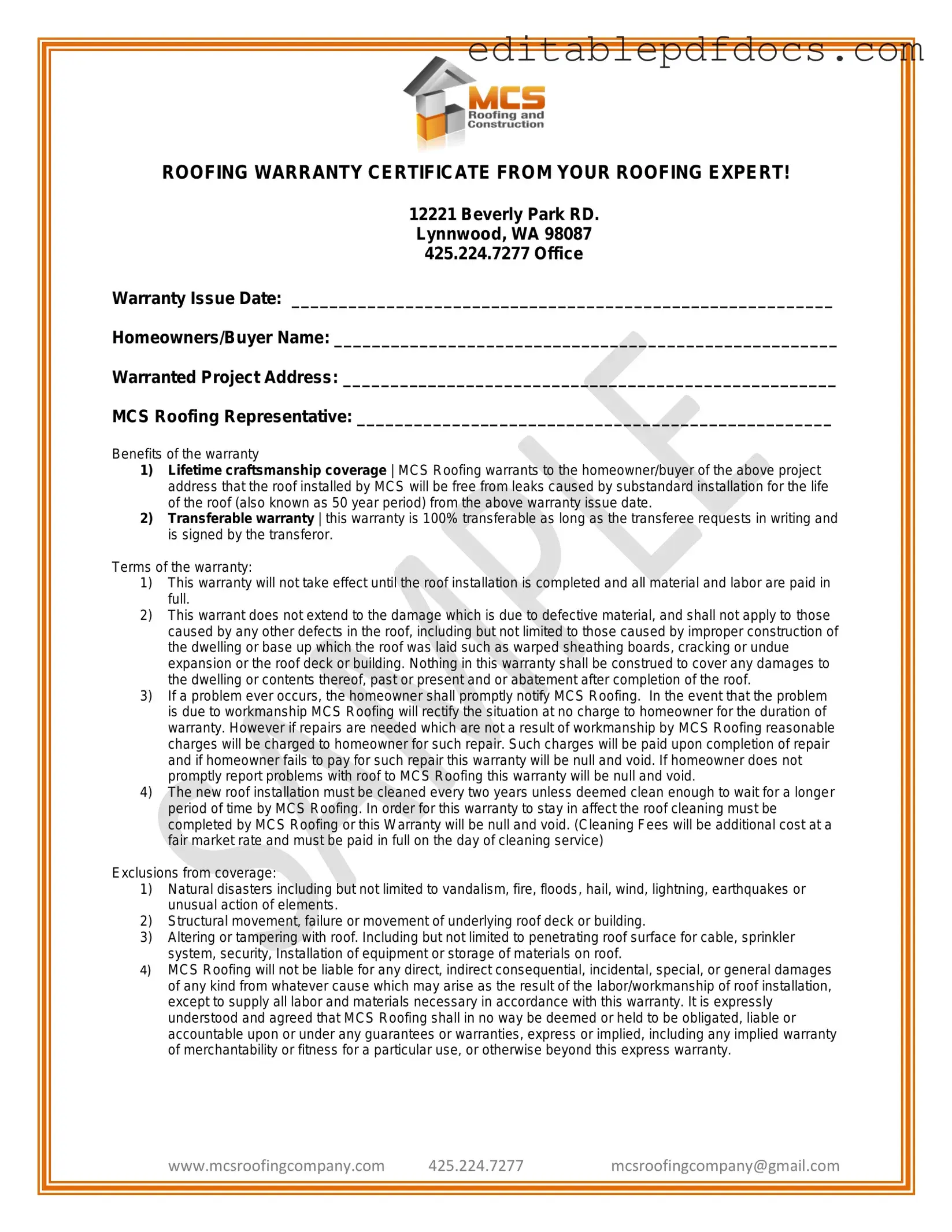Filling out the Roofing Warranty Certificate form can be straightforward, but many homeowners make common mistakes that could affect their warranty coverage. One frequent error is failing to complete all required fields. Each section of the form, including the homeowner's name and project address, is essential for ensuring that the warranty is valid. Leaving any part blank can lead to complications later on.
Another mistake involves misunderstanding the warranty issue date. Homeowners often overlook the importance of accurately entering the date when the warranty begins. This date is crucial because it marks the start of the warranty period, which can be up to 50 years. If the date is incorrect, it may cause confusion regarding coverage.
Some people neglect to read the terms and conditions thoroughly. The warranty includes specific exclusions and requirements that must be understood. For instance, if a homeowner fails to notify MCS Roofing promptly about a problem, the warranty could become void. Understanding these stipulations is vital for maintaining coverage.
Another common error is not providing proper documentation for the roof installation. Homeowners should ensure that all necessary paperwork, including proof of payment for materials and labor, is attached. Without this documentation, the warranty may not be honored.
Additionally, homeowners sometimes overlook the cleaning requirements. The warranty stipulates that the roof must be cleaned every two years by MCS Roofing. Failing to adhere to this requirement can void the warranty. It’s important to schedule these cleanings to avoid potential issues.
Some individuals also misinterpret the transferability clause. While the warranty is transferable, it requires a written request signed by the original homeowner. Many forget this step, leading to misunderstandings when the property changes hands.
Another mistake involves ignoring the exclusions from coverage. Homeowners might assume that all damages are covered under the warranty. However, natural disasters and structural issues are not included. Understanding what is and isn’t covered helps prevent unexpected expenses.
People often neglect to keep a copy of the completed form. It’s essential to retain a copy for personal records. This documentation can serve as proof of warranty in case any issues arise in the future.
Additionally, some homeowners fail to contact MCS Roofing for repairs that are covered under warranty. If a problem occurs due to workmanship, it is crucial to notify MCS Roofing immediately. Delaying this can lead to further complications and potential costs.
Lastly, many individuals assume that verbal agreements are sufficient. All terms of the warranty must be in writing. Relying on verbal assurances can lead to misunderstandings and disputes later on. It’s always best to have everything documented clearly.
